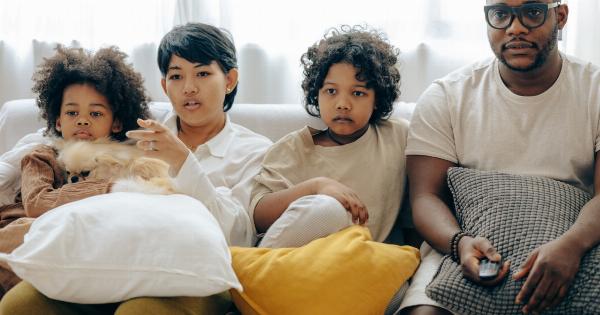Amblyopia, commonly known as “lazy eye,” is a vision disorder that affects approximately 3% of the general population. It occurs when the brain and the eye are not working together, leading to a decrease in vision in one or both eyes.
Amblyopia is typically detected in early childhood, but the exact age at which it can be detected can vary depending on the individual child’s symptoms. In this article, we will explore the different factors that can impact the age at which amblyopia is detected, as well as the importance of regular eye exams for young children.
What is Amblyopia and How Does it Develop?
Amblyopia is a condition that develops when the brain and the eye are not working together properly. It can affect one or both eyes, and typically occurs when one eye is stronger than the other.
The stronger eye sends clearer and more accurate visual information to the brain, while the weaker eye sends blurry or unclear information. Over time, the brain begins to rely more heavily on the stronger eye, causing the weaker eye to become “lazy” or stop working altogether.
Amblyopia can develop for a variety of reasons, including:.
- Strabismus, a condition in which the eyes do not align properly
- Anisometropia, a condition in which one eye has a significantly different refractive error than the other eye
- Cataracts or other eye diseases
If left untreated, amblyopia can lead to permanent vision loss in the affected eye.
When is Amblyopia Typically Detected?
The American Academy of Ophthalmology recommends that children receive their first comprehensive eye exam at six months of age, followed by exams at age three and before starting school.
However, amblyopia is not typically detected at such a young age unless there are obvious symptoms, such as a noticeable misalignment of the eyes.
The most common age for amblyopia to be detected is between the ages of two and six. This is because these are the years when the visual system is rapidly developing and the brain is still learning how to process and interpret visual information.
During this time, it is important to monitor children for signs of amblyopia and other vision problems.
It is important to note that some children with amblyopia may not exhibit any symptoms. This is why regular eye exams are so important, as they can detect subtle vision problems that may not be immediately apparent to parents or caregivers.
Factors that Can Impact the Age at Which Amblyopia is Detected
While amblyopia is most commonly detected in young children, the exact age at which it is detected can vary depending on a variety of factors. These factors include:.
- The severity of the amblyopia: If the amblyopia is severe, it may be detected at a younger age
- The cause of the amblyopia: Different underlying conditions can impact when and how the amblyopia is detected
- Other visual problems: If the child has other visual problems, such as nearsightedness or astigmatism, they may be more likely to develop amblyopia
Ultimately, the early detection and treatment of amblyopia is crucial for ensuring the best possible outcomes for children with this condition.
Treatment for Amblyopia
The treatment for amblyopia depends on the severity of the condition and the individual child’s symptoms. The most common treatment options include:.
- Patching: Covering the stronger eye with a patch for several hours a day to encourage the weaker eye to develop stronger vision
- Atropine drops: Using eye drops to blur the vision in the stronger eye, which encourages the weaker eye to develop stronger vision
- Glasses or contacts: Correcting underlying refractive errors or other vision problems that may be contributing to the amblyopia
- Vision therapy: Using exercises and other techniques to help the brain learn how to process visual information more effectively
Treatment for amblyopia is most effective when started early, which is why regular eye exams and early detection are so important for young children.
The Importance of Regular Eye Exams for Children
Regular eye exams are crucial for detecting vision problems in young children, including amblyopia. Children should have their first comprehensive eye exam at six months of age, followed by exams at age three and before starting school.
After that, children should have regular exams every one to two years, depending on their individual needs and risk factors.
During an eye exam, an eye care professional will assess the child’s visual acuity, eye alignment, eye movement, and overall eye health. They may also perform additional tests to check for conditions like amblyopia, color blindness, and astigmatism.
Parents and caregivers can also help monitor children for potential vision problems by watching for signs like:.
- Squinting or rubbing their eyes frequently
- Holding books or objects very close to their face <li<Having difficulty reading or following objects with their eyes
If any of these signs or symptoms are present, parents should schedule an eye exam for their child as soon as possible.
Conclusion
Amblyopia is a common vision disorder that affects many children around the world. While it can be detected at any age, it is most commonly detected in early childhood, between the ages of two and six.
Regular eye exams are crucial for detecting and treating amblyopia, as well as other potential vision problems. By getting regular eye exams and monitoring for signs of potential vision problems, parents and caregivers can help ensure that their children have the best possible vision outcomes.



























